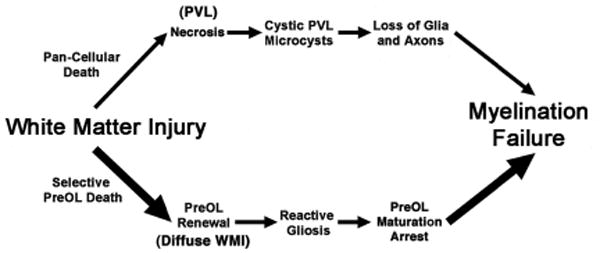Figure 1.

Pathogenesis of myelination failure arising from white matter injury (WMI) related to pan-cellular death and necrosis (periventricular leukomalacia (PVL); upper pathway) or selective preOL death and diffuse WMI (lower pathway). Note that the lower pathway is the dominant one in most contemporary preterm survivors, whereas the minor upper pathway reflects the declining burden of white matter necrosis that has accompanied advances in neonatal intensive care. Severe necrosis results in macrocystic lesions (cystic PVL), whereas milder necrosis results in microcysts. Milder WMI selectively triggers early preOL death. PreOLs renewal arises from the rapid regeneration of preOLs from a pool of early OL progenitors that are much more resistant to cell death in WMI. Chronic lesions are enriched in reactive astrocytes that generate inhibitory signals that block the maturation of preOLs to mature myelinating oligodendrocytes.
